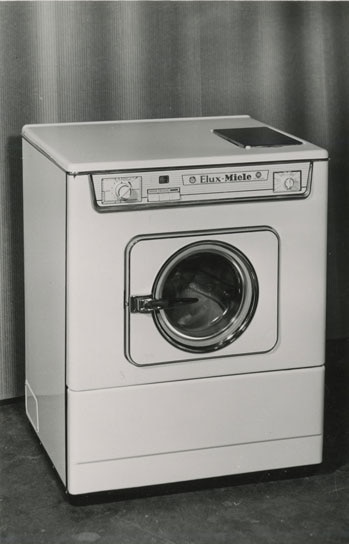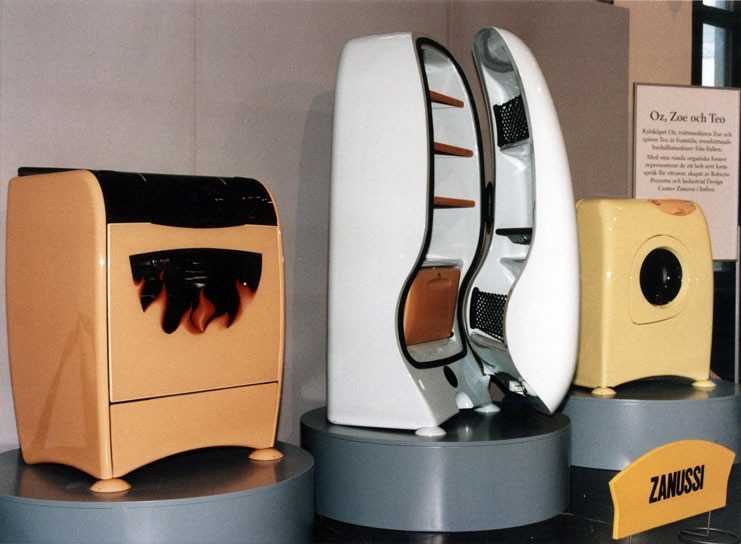From a rather straightforward model in the early 1950s, Electrolux’s washing machines developed enormously throughout the post-war period. Much of this development was due to strategic acquisitions of brands including Germany’s AEG and Italy’s Zanussi. Cutting edge design, a growing brand portfolio and manufacturing assets were three of the consequences.
Washday blues were now a thing of the past
The post-war years were a boom period for consumer goods, not least for the domestic washing machine. In 1951, Electrolux’s first model, the W 20, was launched to the delight of Nordic housewives. In 1961 came the Elux-Miele 505, which continued to ring the changes. This was the company’s first completely automatic, front-loading machine complete with program selector, security door and thermostat. It carried out the whole washing process in a mere 62 minutes.

Elux-Miele was Electrolux first fully automated washing machine
Acquisitions galore
As ever, Electrolux saw where the gaps were in their competence and purchased companies with both a good market share and impressive experience in specific areas. The French company, Arthur Martin, was bought in 1976. Founded in 1854, it was known for its flair and imaginative design. Next up in 1984 was Zanussi from Italy, the largest manufacturer of washing machines and driers in Europe. Two German companies gave access to the large German market: GMBH Zanker in 1985 and in 1993 AEG Hausgeräte.
Roberto Pezzetta’s curvy, colourful, eye-catching threesome
Zanussi’s slogan was “the appliance of science” and its products were often futuristic. The chief designer, Roberto Pezzetta, was a visionary and a major figure in European design.

Roberto Pezzetta's design concept with from left to right; Teo, Oz and Zoe
His ZOE washing machine, OZ fridge and TEO cooker were revolutionary. All three were characterised by powerful curves and colours which were a break from the clinical appearance of kitchenware. Zoe was bright yellow with orange details and stood on small paws. Even though OZ was the only one that went into production, TEO and ZOE, as design concepts, proved that white goods did not have to be white or box-shaped.
A process of constant innovation
Whereas many of the washers sold on the US market at this time were top-loaders, the European market favoured front-loaders. Slightly more expensive, front-loaders used less water, energy and detergent. Zanussi had been a pioneer in this field and in the 1960s had introduced front-loading machines with five different programmes.
Innovations and improvements continued. In 1986 came the ALC technology which regulated the amount of water used according to the load. The Iron Aid dryer was a useful complement: the first steam tumble dryer on the market which reduced the need for ironing. Power Jet: a powerful water jet located in the detergent drawer that ensures no powder is left behind. Gentle Care Drum was a program specially designed for more sensitive clothes. Customers discovered that the new generation of washers catered ever more specifically for their needs.

